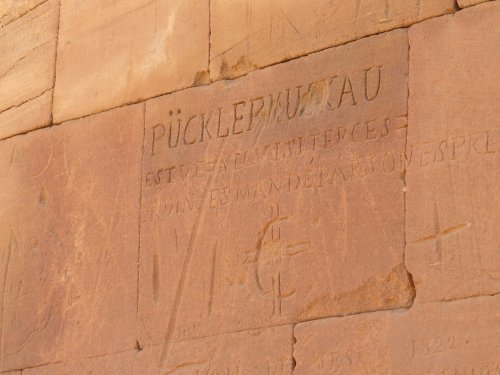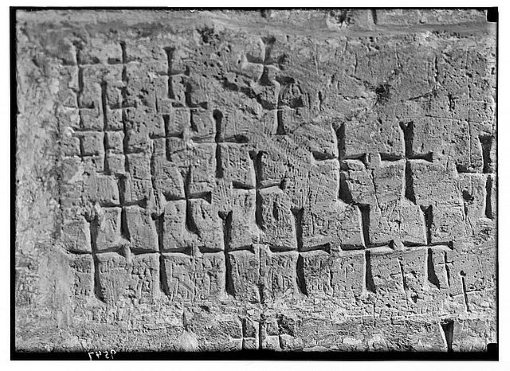First published: Sun 03 Mar 2019.
Els Slots
Historical Graffiti
Comments
10 comments
Dechmann Caspar
6 years, 9 months ago (Mar 3, 2019)
Your picture is even better since the graffiti could be of the UNESCO-Duke of the Muskau park or at least a relative!
Reply
Jay T
6 years, 9 months ago (Mar 3, 2019)
Lawmakers have a tradition of carving their initials on their desks in the US (see https://www.politifact.com/tennessee/statements/2012/jul/18/julia-hurley/state-rep-julia-hruley-says-state-and-us-capitols-/). Is there any counterpart to this tradition in London’s Palace of Westminster? If so, that might be another addition to this link.
Els Slots
6 years, 9 months ago (Mar 4, 2019)
Found something, Jay T: Coronation Chair in Westminster Abbey "Most of the graffiti on the back part of the Chair is the result of Westminster schoolboys and visitors carving their names in the 18th and 19th centuries. One of the tourists carved "P. Abbott slept in this chair 5-6 July 1800" on the seat."
Ian Cade
6 years, 9 months ago (Mar 4, 2019)
Good work on the Westminster one, Another one that may qualify and I’m always keen to recount is in the in the Houses of Parliament where there is a hidden plaque surreptitiously installed by Tony Benn to commemorate Emily Davidson’s rather impressive suffarage protest (well worth a further read https://www.parliament.uk/about/living-heritage/transformingsociety/electionsvoting/womenvote/case-studies-women-parliament/ewd/tony-benn-plaque/) I’m sure there are others around the place as well though there aren’t any desks in the Houses of Commons or Lords so perhaps not the same as in Washington.
Im trying to find something online about it, but at Wartburg there is graffiti left by Peter the Great in the room where Luther translated the bible. I will see if I can find something if not I will dig out my photo of it.
Jay T
6 years, 9 months ago (Mar 5, 2019)
So there is Westminster graffiti, then, even if in the abbey rather than the palace — great find, Els!
Paul Schofield
6 years, 9 months ago (Mar 5, 2019)
The runic graffiti on the Piraeus Lion in venice (https://en.wikipedia.org/wiki/Piraeus_Lion) is doubly interesting in that it was made in another world heritage site, Istanbul.
Paul Schofield
6 years, 9 months ago (Mar 5, 2019)
Whoops - Athens I mean! - mixing my sources!
Jay T
6 years, 8 months ago (Mar 30, 2019)
Just visited Maulbronn Monastery this week. The audio guide makes sure to point out the carved graffiti around the monastery from seminary students over the past centuries. Here’s a link to some photos I found showing the graffiti: https://www.norbertwoehnl.com/photos/maulbronn-monastery-germany-old-graffiti/


